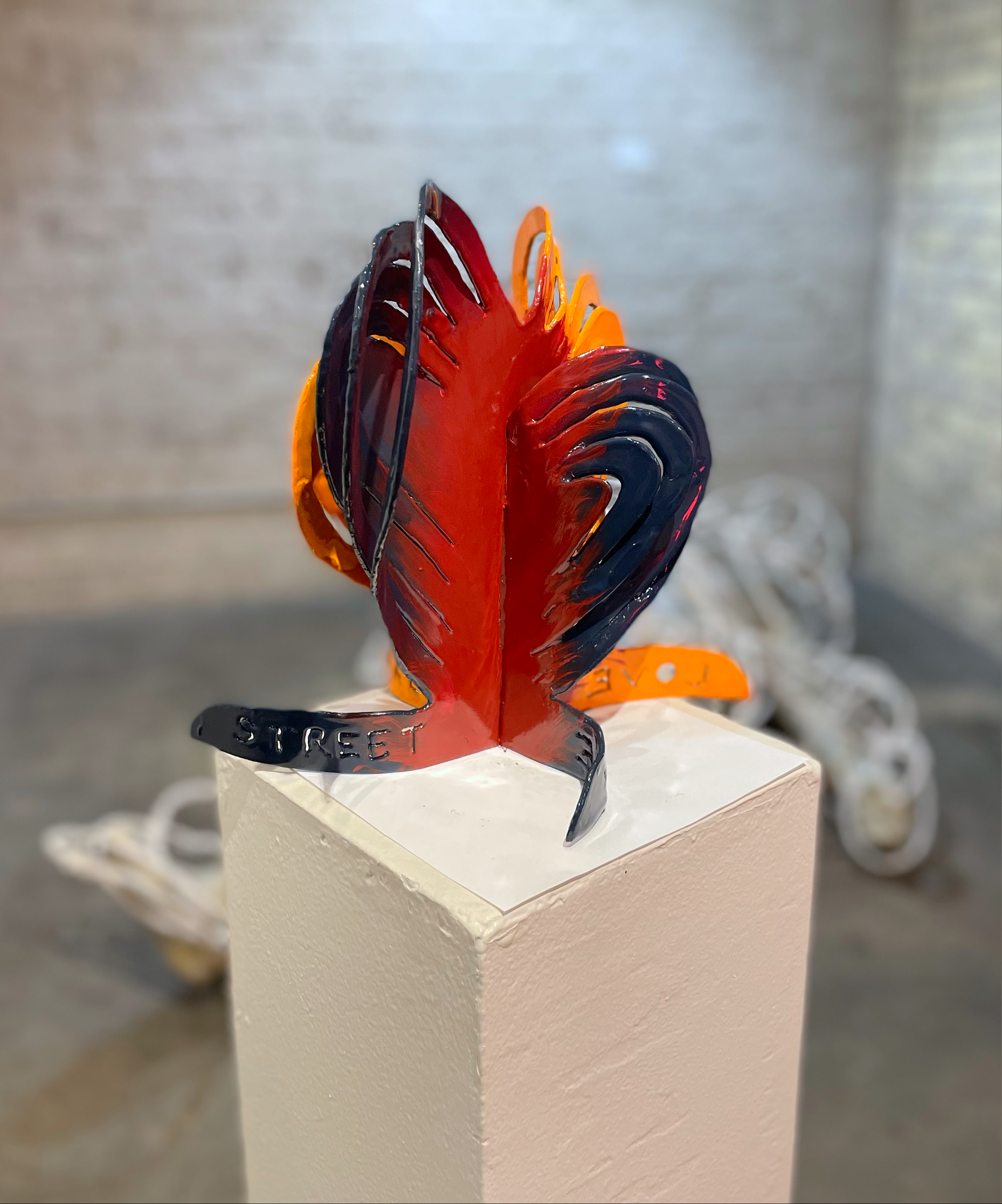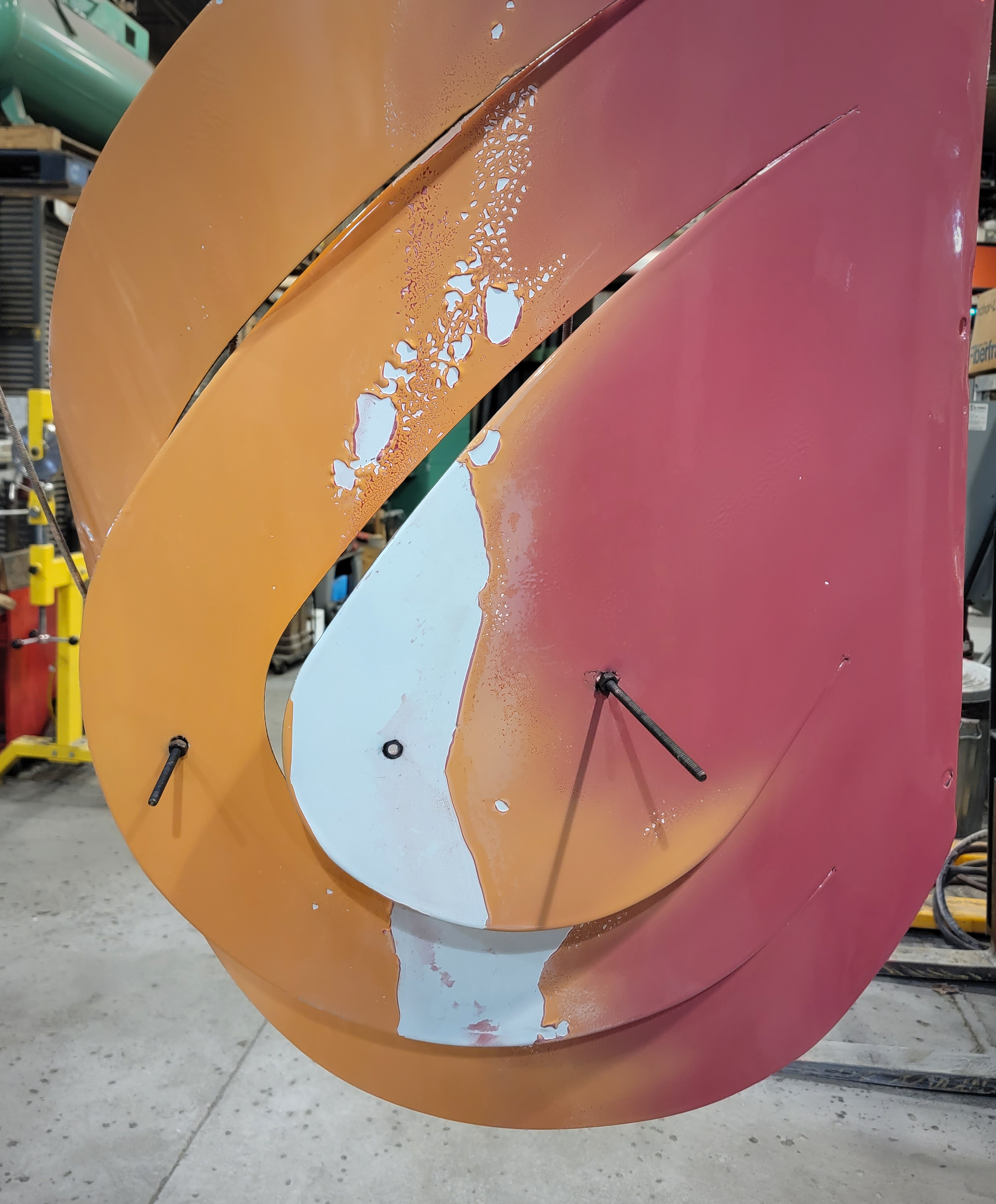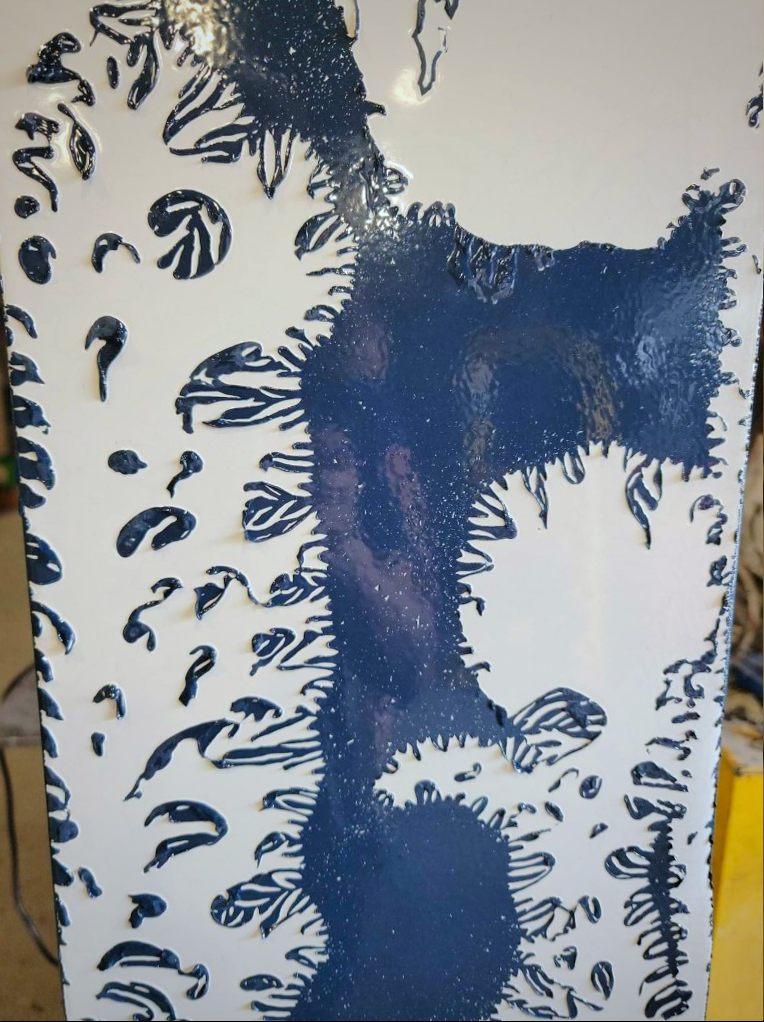"Spirit of Hope" Lands on Lake Street: Behind the scenes of CAFAC’s first 3D enamel sculpture
When CAFAC Artistic Director Heather Doyle was contacted by Lake Street Council with an offer to design a piece of public art, she saw it as an opportunity to try something brand new.
"I had been wanting to really push the limits of our kiln into 3D territory in enamel," Heather says. "I said 'I don't know how to do it yet, but please just give me a shot.'"
The response?
"'Well, if it's a complete failure, you'll make us something else cool?'" Heather laughs, "And I was like yes! Yes I will!"
Left: A paper mockup of one iteration of the sculpture’s design. Right: A small-scale maquette of the sculpture, created with materials that would be used in the full-size version.
After a long, iterative design process, Spirit of Hope started to take shape as a nearly eight-foot-tall piece featuring two interlocking enameled hearts.
"The design was partially inspired by the art form itself and by what had happened on Lake Street," Heather says, referring to the civil unrest sparked by George Floyd's murder. "We had all come through the fire and emerged better than before." The heart features fourteen lobes, intended to represent the fourteen neighborhoods that are touched by Lake Street from the lake to the river.
Because of the complexity of working with enamel on such a large scale, Heather couldn't do it alone. So she enlisted the help of Jessa Boyer, a long-time member of the CAFAC community, enamel artist, and fabricator on public art pieces including Zaníyaŋ Yutȟókča: Brave Change.
Put simply, enameling is a process of fusing powdered glass to metal in a kiln. Each piece of metal needs to be thoroughly cleaned so that a protective ground coat will stick to it. After that, the piece is treated with a second layer, called the cover coat, before the final, colorful graphics coat can be applied. With CAFAC’s large enameling kiln, artists are able to create public art-scale works with durable, colorful, UV-resistant finishes. A kiln of this scale is an uncommon resource nationwide, and allows artists an alternative to the typical palette of metal finishes seen in outdoor sculptures.
Spirit of Hope was a particularly difficult undertaking, because of its novelty. After fabricating the steel lobes of the heart, Heather spent weeks testing the kiln for quality at different locations and working with Jessa to rig each piece of the sculpture.
"The three-dimensional shape had to fit in the kiln just right," Jessa says. "Even after we got it rigged and would fire it, the pieces would flex because of the heat." The tough, glossy finish of enamel can will crack if the metal it’s applied to flexes too much.
One sleepless night, the solution popped into Heather's head fully formed. Using a series of threaded rods and nuts, the two created a rig that would maintain its shape even when red-hot. But their struggles weren't over yet--the drying process for the graphics coat was equally tough to work out, if not harder.
Two examples of failures in the graphics coat that occurred due to improper drying.
"We had a couple failed pieces because we heated it up too quickly, and the enamel literally crumbled off of it. We had to remake two entire feet, because there was no way of getting them completely clean [to try again].”
The testing process dragged on, and soon another complication arose: supply chain issues. To make sure the piece could be installed on time, Heather reluctantly resorted to a temporary fix.
"We went ahead and sprayed latex paint on it, which was just so painful for all of us," says Heather. "Just knowing that you're going to have to take it off later, it was pretty brutal." As expected, the paint lasted only a few months before it started to fail. Heather and Jessa took that time to experiment with different enamel processes and temperatures to create a beautiful, durable finish.
"What we ended up figuring out is that we have to heat it all up evenly, at a very low temperature," Jessa says. "So the graphics layer has to sit in the kiln for two hours at 150F so it's fully dry before firing." Including this drying step, each piece of the sculpture needed to be fired a minimum of four times.
The two worked over the spring to peel off old paint and re-enamel each piece of the sculpture before installing it for the second--and final--time on June 5th, 2023.
The final sculpture, installed at the corner of Lake Street and Chicago Avenue on June 6, 2023.
"Once we got it in the ground and we saw the finished piece, it was like, oh my gosh, it's done, we did it!" Jessa laughs.
Both agree that this project was pivotal in increasing CAFAC's capacity for large, 3-D enamel work.
"We really broke barriers with this sculpture. We were able to create a three-dimensional sculpture and have it completely successful in every way it could be," Jessa says.
"It's a really important piece to us,” Heather adds. “We couldn’t ask an artist with a commission to fabricate a 3D enamel project at CAFAC without us having the process figured out. Lake Street Council gave us the opportunity to expand our capacity and offer artists a process that is really rare and fantastic.”





